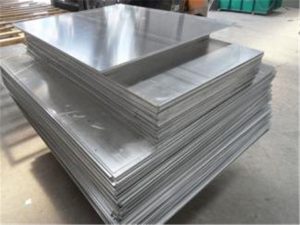Aluminum plate refers to the rectangular aluminum plate sheet made of pure aluminum or aluminum alloy through pressure processing (shearing or sawing) to obtain rectangular cross section and uniform thickness Internationally, it is customary to call aluminum materials with thickness of more than 0.2mm, less than 500mm, width of more than 200mm and length of less than 16m as aluminum plate or aluminum sheet, less than 0.2mm as aluminum foil and width of less than 200mm as row or strip (of course, with the progress of large equipment, there are more rows with width of 600mm).

Aluminum plate is usually divided into the following two types:
1 According to the alloy composition, it can be divided into: high-purity aluminum plate (rolled by high-purity aluminum with a content of more than 99.9), pure aluminum plate (basically rolled by pure aluminum), alloy aluminum plate (composed of aluminum and auxiliary alloys, usually aluminum copper, aluminum manganese, aluminum silicon, aluminum magnesium, etc.) composite aluminum plate or welding plate (aluminum plate materials for special purposes are obtained by means of multiple material composites) aluminum clad aluminum plate (thin aluminum plate is coated on the outside of aluminum plate for special purposes)
2. According to the thickness, it is divided into: (unit mm) thin plate 0.15-2.0, conventional plate 2.0-6.0, medium plate 6.0-25.0, thick plate 25-200, five rib pattern aluminum plate and ultra thick plate more than 200
3.Common aluminum plate grades include 5083, 5086, 5754, etc.
